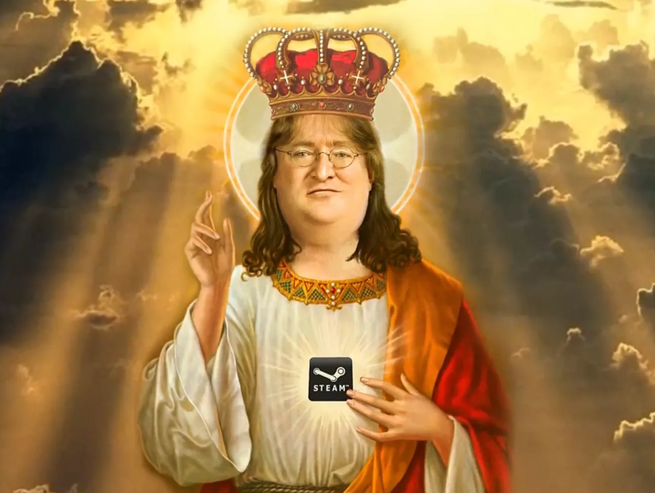Grandfather, take your pills! Again you grumble that the grass was greener before, and there were a lot of games and they were cool.” This is roughly how many young gamers react to the grumbling of seasoned gamers about the modern gaming industry. Of course, criticism of the “olds” is not always justified, but there is a rational grain in it. Previously, indeed, some things were better, but the attitude of developers towards their projects was different.
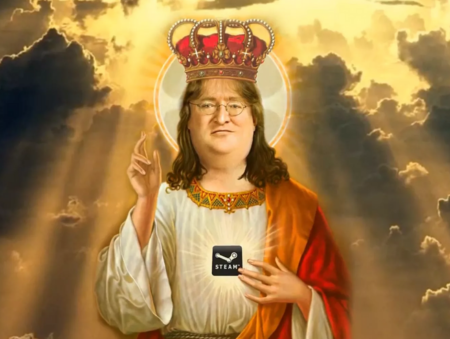
It may not be at all obvious to some of our readers that the video game industry is still quite young and younger than the computer technology with which video games are now associated. The first computers were seen as a tool in the economic sphere. Only with the reduction in cost of the component base and the advent of home personal computers (PCs) did video games begin to appear – in their modern sense. This period began in the 80s of the 20th century. So many of our readers, as well as the authors and editors of iXBT Games, are the same age as the video game industry, and others are even older than it.
It’s no wonder, then, that grumbling about the quality of today’s big-name releases and industry “experts” who can only produce something of the stature of Starfield is perceived by many as the grumbling of the older generation. What can these old people allow themselves to do? But because the memory has not completely faded yet. Of course, painting the entire modern gaming industry with black paint is also wrong. Because the developers’ approach to the games they create does not change until their status changes. And today is the best time to play. You just need to know where to look.
Time for startups
The 80s and early 90s were the birth of the video game industry. If you saw that period in person, then you know such legends as Atari, Commodore, Sinclair (ZX-Spectrum), Nintendo. The latter, however, was known in Russia under the underground nickname Dendy and it was not exactly a Nintendo company, but this does not change the essence of the matter. Now it seems that these names were on everyone’s lips, and the entire gaming world revolved around these platform holders. This is true, but what is often overlooked is the fact that the entire gaming world at that time was modest in size. And there are even fewer game developers.
If we compare the size of companies of that time with today, then Sony Entertainmentmet, Microsoft or even Valve are tiny organizations.
A striking example of this is the story of the emergence of such a famous video game hero as Mario. Young Miyamoto Shigeru, now a famous game designer, and then still a very green young man who worked at the small Japanese company Nintendo, was approved for the position of project manager. Miyamoto was supposed to bring the company’s arcade machines to the American market. Nintendo rented a small warehouse in the suburbs of Seattle and brought 3,000 machines with the game Radar Scope (a clone of Space Inviders) to the United States.
The American market did not submit. Nintendo was able to agree on the installation of only one thousand machines, and two thousand devices were still in the warehouse, for the rental of which debts had already begun to accumulate. Miyamoto Shigeru had to get out and quickly come up with a new game that could be installed on the supplied machines, before rental payments made a fatal hole in the budget. Such a game was the platformer Donkey Kong, where the main character Mario, named after the warehouse owner Mario Segali, saved the princess from the gorilla by climbing higher and higher stairs and jumping over the barrels that Kong threw off.
The game created a sensation and became Nintendo’s ticket to big money. But consider the sheer scale of the challenge: A small Japanese company is struggling to get 3,000 slot machines installed in the United States. Compare that to the current Nintendo, which will have sold over 800 million units by 2023 .
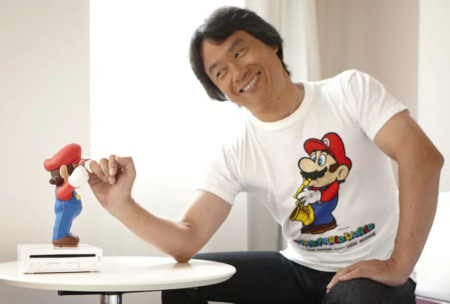
Julian Gollop, the author of the best tactical strategies Rebel Star and Laser Squad for the ZX-Spectrum, as well as the future creator of the immortal X-Com, created his first game Red Shift alone, and the publisher of Rebelstar Raiders was “ a group of friends who had a company called Red Shift “. Laser Squad, which would eventually become X-Com, was developed by Julian at his own company, Target Games, which he founded with a friend after graduating from university. And these two young men invented DLC !
“ Another innovation that we have introduced in Laser Squad is related to sales. At the end of the booklet describing the rules there was a coupon that could be sent by postal order or check for the purchase of an expansion kit on cassette (Author’s note: games of that time were supplied on audio cassettes, which were inserted into the player and then loaded onto the computer from it. This is usually the procedure took several minutes) , which came with two additional missions that loaded after loading the main game. … It was a good business model for us, all we had to do was write them down and pay a little postage; in the morning Nick and I would go to our little office in Harlow, get all our orders in the mail, take the tapes out of the boxes, put them in bags and… take them to the post office. Then we programmed for the rest of the day .
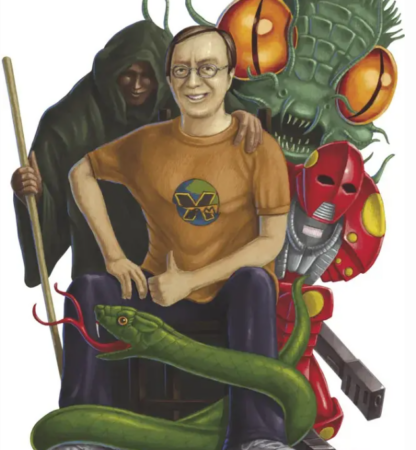
Julian Gollop and the heroes of his games.
The creators of another top Spectrum franchise, Dizzy, the Oliver brothers, said that they began working in the gaming industry with a competition on the creation of a video game on the British children’s television program The Saturday Show. They were the only ones who sent the actual game and not a crayon sketch. The brothers later sold their Gambit to Acornsoft for £200.
When the twins were already working for the publisher Codemasters (it had recently been acquired by EA), they came up with the game’s main character, Dizzy, an egg-shaped character who turned out that way because his size on the screen had to be no more than 48 pixels high and 32 pixels wide . The ZX-Spectrum screen resolution was 256×192 pixels, the resolution of modern Ultra HD 4K monitors is 3840×2160 pixels.
Dizzy’s design was developed in about 30 minutes. After which, the developers began to come up with a game world suitable for this hero. At Codemasters at the time, such creative freedom was the norm. A team of one or more freelance programmers developed games in house and they were responsible for their own projects. As one brother said: “ They never ordered anything specific, and you didn’t have to wait for approval. You wrote games and sent them the finished product .” The result of this creativity was a popular gaming universe, as well as several charming quests.
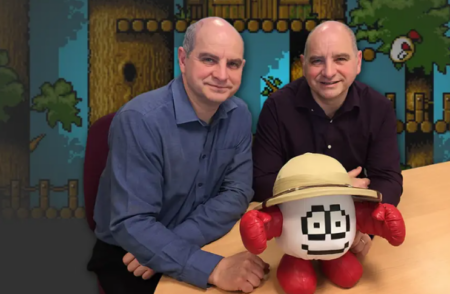
Why all this detailed history? After its birth, the gaming industry remained for a long time the domain of enthusiasts. Game companies of that time would now be called startups. They were very small, with a lot of influence from specific people and their personalities. Many individual enthusiasts created many games. The apparent simplicity of game development should not be deceiving.
Indeed, in those days, one person could create a game, but such a developer had to have unique knowledge: often these people were programmers, artists and, of course, game designers all rolled into one. The code was written in commands for the processor or in “assembler”; at that time there was no widespread use of game engines like modern Unreal Engine or Unity.
Some of them created masterpieces and determined the development of genres for many years to come, although even more frankly weak projects were created. Now we don’t remember either these games or their developers. So why do many gamers familiar with that era have the feeling that gaming was better then? We remember a lot of good games because there were a lot of them in our childhood. If you look at the Top 100 best games for ZX-Spectrum or Dendy, you won’t find passable projects in this top. At the same time, the active life period of both the ZX-Spectrum and the NES was about 10 years. This means that these platforms received an average of 10 great games per year over their lifetime. Cool game almost once a month!
This happened because the developers of that time treated games as their own creativity. Self-expression comes first. And if this allows you to earn a little money (and it was impossible to earn a lot of money on games at that time, because there was no gaming market yet), then that would be just great! That’s why many people remember games for Dendy or ZX-Spectrum with warmth.
Business period
In the late 90s and early 00s, technology became cheaper and increasingly permeated into every home. With the advent and widespread adoption of 16-bit consoles and IBM compatible PCs, the gaming industry is becoming a business. The best surviving startups turn into publishing houses. New stars are born. The number of gaming devices sold allows you to earn more money from selling games and invest it in development.
“ You will never make money from games. It’s better to do what people need – business applications ,” this is what John Romero’s stepfather told him. Like his future collaborator, John Carmack, he grew up playing 80s games. The two Johns started their business like their predecessors, with a small team of like-minded people. The first three-dimensional shooter Wolfenstein 3D, developed by the studio, brought in one hundred thousand dollars in income, and after the release of DOOM, in which you could shoot your best friend with a shotgun online, iD Software did not have problems with money for many years.
This is how startups turned into very profitable businesses. And, of course, this began to affect relationships in the team. There were no longer people working on games alone. Game design, level design, programming were already supervised by different specialists. And at some point, John Romero, the star of the team, who loved to attend events wearing a T-shirt with the inscription “Author,” began to interfere with the company’s work and earning money. “ Guys, we have always worked like this! John makes the engine, and then we make a game for it! “- Romero justified himself. But by that time, iD Software had turned into a quiet office where programmers and other specialists worked for days.
Created by Romero after leaving the company, Daikatana became a resounding failure . Times have changed, and John Romero hasn’t realized it yet.

Sid Meier, the creator of Civilization, also began his career in the gaming industry with a startup. In his book “Life in the World of Computer Games,” he describes his first experience of developing a serious game for a work colleague. It started almost on a dare. But Sid and his colleague Bill Steely took the process very seriously: “ When I finally decided that the game was completely ready, I gave it to Bill, and the next day he returned it to me along with a list of coding errors and inaccuracies in the depiction of military action. It was at that moment that I was finally convinced that good could come out of our cooperation. Bill’s interest was not in making a quick buck in a field he knew nothing about; he cared just as much about the quality of the game as I did .” As a result, MicroProse was born.
Meyer was more interested in games rather than business, unlike his partner. But we managed to separate on good terms. Bill Steely bought out Sid Meier’s share of the company. Sid no longer had a say in the studio’s new projects, but he did have creative freedom. By the time Sid Meier started working on Civilization, he had already made a name for himself as the author of Pirates! and Railroad Tycoon. And despite this, the company did not dare to completely switch to creating a new title. Although Meyer’s partner believed in his friend’s genius, he did not really believe in the project itself.
Development of Civilization was interrupted for some time, the company allocated resources to other games. And during this break, it dawned on Sid that the game should be a turn-based strategy, he realized what the technology tree should look like. Initially, Civilization was supposed to be similar to the later Age of Empires.
This sober approach to development, as well as the attitude towards creating games as a production process, has made MicroProse one of the best in creating strategy games. By the way, the already mentioned Julian Gollop implemented his ideas in XCom with this publishing house. But at the same time, we managed to maintain a creative approach when creating games.
And as a true game designer, Meyer still believes that gameplay is more important than monetization: “ Gameplay is the unique feature that distinguishes games from other entertainment. And when we forget about that and decide that monetization or some other non-gameplay aspect is more important, when we forget to create great games and start thinking about games as a tool, a means to achieve some goals, then We are somewhat off track .”

The history of the Steam service is a story of stubbornness, madness and genius. Now it’s impossible to imagine the PC market without Valve’s creations. However, when the head of the company, Gabe Newell, began promoting the idea of digital sales through the service and tried to interest major players in the Internet market (Cisco, Amazon, Yahoo), he was rejected everywhere – the idea seemed so crazy to the managers of these companies. And then Valve decided to implement such a service themselves.
The path to success was not strewn with roses. Players hated Steam in the early 00s. He seemed superfluous and unnecessary to them. He was in the way. Valve games purchased on disc required an Internet connection and could only be activated online. What kind of digital sales can we even talk about in such a situation? But Gabe Newell did not back down and did not give up. Confident that he was right, he insisted that Valve continue to improve the service.
In many ways, this was possible due to the resources that the company earned from its games. Half-Life (1999), Team Fortress (1999), Counter-Strike (2000), Half-Life 2 (2004), Portal (2007), Left 4 Dead (2009). Ultimately, his strategy was successful. Gabe Newell turned out to be not only a successful businessman and manager. But this success would not have happened if Gabe did not love games and did not love the players who played them. That is why he became one of the richest people in the USA. He earned his first billion in 2012.
How did this undeniably great man in the gaming industry feel about game development back then? Yes, just like now : “ Delays are temporary. A sucky [game] is forever. We could have tried to throw [the unfinished Half-Life onto the market], but we didn’t want to be that kind of company, that kind of people. This is not the relationship we wanted to have with our clients .”
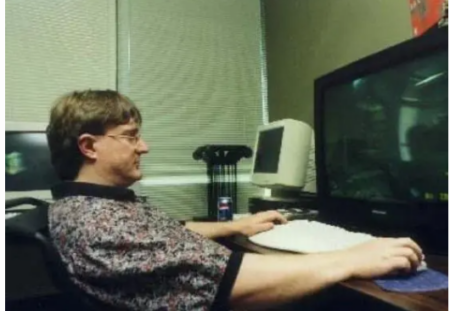
In general, this period is the formation of the gaming industry, its flourishing. The decade from the late 90s to the mid 00s gave us perhaps the best games and great franchises. This is the period of private companies, where the influence of game designers was still significant, but they were already relegating to secondary roles. Both John Romero and Sid Meier ended up leaving the companies that made them a lot of money. But if at the helm of such companies there was a competent businessman who was in love with games, then the result was Valve or Nintendo. When the owners of such a business do not have to report to faceless investment funds, they are capable of risky experiments, crazy and not-so-ideas. But these are the people who ultimately drive the gaming industry. And when they have the funds to do so, unlike startups, great games are born.
In addition to the already mentioned MicroProse, I would like to recall other publishers of that period: Westwood, 3D Realms, The 3DO Company. They published cool games, although they turned out to be so-so businessmen. The period when publishers divided the gaming market was the golden age of the gaming industry. The attitude of developers and publishers to the creation process was this: we want to make money, which means we need to produce a cool product so that our competitors don’t eat us up. But the more money there was, the less creativity remained.
The era of corporations
The more video games penetrated society, the more players spent money on them, the more interesting this industry seemed to large corporations. Sony turned its attention to this market a little earlier than the rest, Microsoft joined it in the 00s, and now Apple, Google, and Amazon are involved in games.
The advent of big business itself did not change the gaming market. But by the end of the 00s, almost all players who wanted to acquire gaming devices could do so. And it so happened that on the Western market these devices were either Xbox or PlayStation. Two corporations, having clashed in competition, spared no resources. And at first, users only benefited from this, although the two platform holders practically “killed” the sales of games on PCs, almost crushed Nintendo, crushed Sega as a console manufacturer and several other smaller competitors.
Game publishers have engaged in mergers and acquisitions (Square Enix, Activision Blizzard King – dozens of examples). On the one hand, the stronger absorbed the weaker. On the other hand, by uniting it is easier to fight off competitors. And by the mid and late 1990s, only major players remained in the gaming market. And at that moment, experienced gamers felt that something was wrong with the games.
Effective managers at the head of corporations owned by large investment funds fear risk like fire. You can lose a high position quickly; all you have to do is slip up once and not fit into corporate standards.
Days Gone, a Sony console exclusive led by Jeff Ross and John Garvin, received a lukewarm reception from critics with a score of 71 out of 100 based on 108 reviews from various publications. The game sold well, was commercially successful, many players were delighted with it, but in high corporate offices the release of Days Gone did not cause delight. Sony exclusives can’t have such low ratings. This put an end to a possible continuation. According to Garvin : “ It was hard, I won’t lie. And the fact is that… And this is how things are at Sony, but the Metacritic score is the most important thing for them. If you’re the creative director of a franchise and your game comes out with a score of something like 70 points, then you won’t be the creative director anymore .”
Both Jeff and John do not show dissatisfaction with the management of the corporation in their public speeches . However, disappointment with the decision of the corporation’s management no, no, but breaks through among the developers. Thus, John Garvin shared his opinion on social networks about why the press gave the project low marks: “ The game had technical problems related to the frame rate… It was “reviewed” by reviewers who did not even run the game… It was reviewed social equality warriors who were just sick and tired of a rude white guy staring at his girlfriend’s ass .” John’s colleagues hastened to disown such statements by the creator. Such statements clearly do not fit into the corporate culture.
The situation at Microsoft is even worse. It seems like this company’s corporate culture is stifling creativity. Having huge resources, the company can afford to buy up development studios in batches. Activision’s recent acquisition of Blizzard was the largest acquisition of a third-party company by a corporation. But perhaps one of the most striking examples of Microsoft’s creative impotence is the situation with the Minecraft franchise.
Minecraft creator Markus Persson would certainly have been comfortable in the 80s and 90s in the company of like-minded game designers. The Swede never minced words , but spoke as he thought: “ Large companies compare piracy with theft. If I’m not stealing a car, then I have no problem stealing a good design. If I like someone’s apartment, I will try to make mine the same… but that’s not stealing .” On social networks, he spoke out on the most pressing topics and his words were not always in line with the “correct” opinion of the people who shook hands.
While working on Minecraft, Persson always tried to keep in touch with the community : “ Feedback is extremely important to find out what people like about the game and what direction the player wants it to go. I try not to read individual sentences too closely and prefer short ‘prompts’ with ideas for what could be added, as this helps me feel creative .”
Alas, Marcus burned out working on Minecraft and the project was bought by Microsoft for $2.5 billion. Mojang Studios continued to work on the project, but in all the time since the purchase, it seems they have not understood what the secret of Minecraft’s success was. The game itself remains one of the best-selling games in the world, but offshoots like Minecraft Dungeons are failing to captivate players. Microsoft’s huge resources and love for the original game don’t help. By the way, having become a billionaire, Marcus was no longer capable of creativity. For some reason, we no longer see new interesting games created under his leadership.
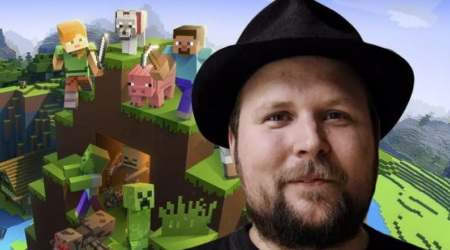
But even against the backdrop of Microsoft, the efforts in the gaming industry of Google corporations, with the cloud gaming project Stadia and exclusives that never saw the light of day, or Amazon, after injecting astronomical sums into mastering the release of the not very successful New World, look simply ridiculous. The stories of these failures serve as a clear illustration of the fact that no amount of money can replace the creative potential of game designers. On the contrary, the corporate culture is killing it.
Of the major players in the gaming market, only Valve and Nintendo stand out from the general background. But they remain effectively private businesses, not faceless corporations. And as long as these companies are run by people who are in love with the gaming industry and video games, everything will be fine.
But when effective managers take charge of games, creative search, passion and love for games are replaced by focus groups, public agendas and following popular trends. Developers, even top game designers in such conditions are only hired personnel. And “effective” management is able to talk about stock prices, metrics, and bonuses for length of service. No risky movements – otherwise you can lose your place of bread. This is the whole essence of the attitude towards games of modern top players.
Fortunately, all is not lost in the gaming industry. We are now witnessing a renaissance of startups. But we will talk about this in one of the following materials.
Diagnosis
The examples given in this article of the attitude of developers towards the games they create, towards the gaming industry and players, are not a complete reflection of all opinions and all ongoing processes. But the evolution of studios and opinions is well illustrated by the objective processes in the development of the gaming industry. All of them fit into well-known schemes described by economists. The gaming industry is no exception here.
As soon as the market reached the limits of growth, as soon as the sharks of business swallowed up the weakest, creativity disappeared. Alas, this almost always happens and exceptions confirm the rules. So the grass really was greener? The grass is green now. You just need to turn away from bright shop windows and advertisements, not be led by a beautiful picture and look around. Amazing discoveries await you.
